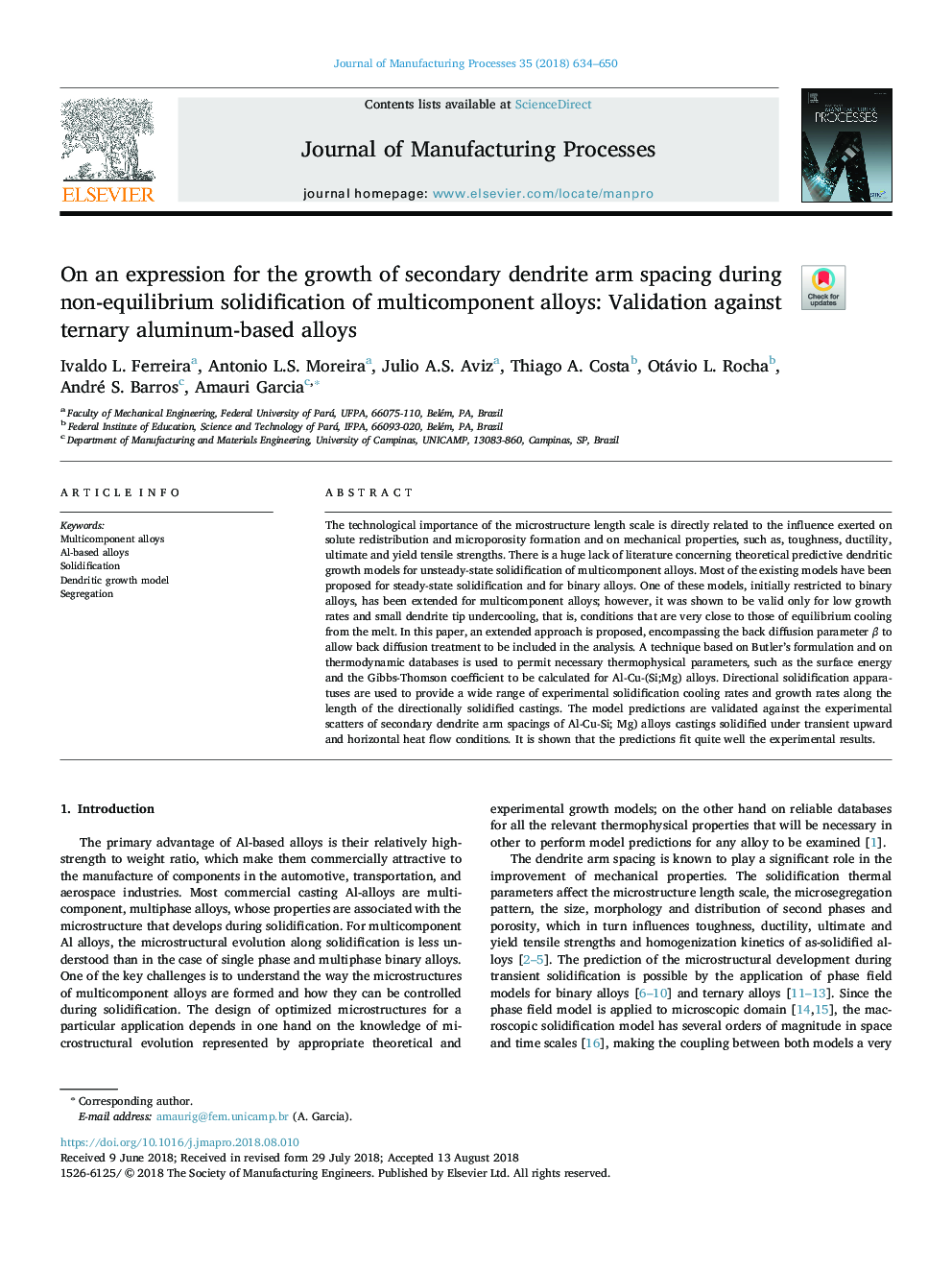| Article ID | Journal | Published Year | Pages | File Type |
|---|---|---|---|---|
| 11007186 | Journal of Manufacturing Processes | 2018 | 17 Pages |
Abstract
The technological importance of the microstructure length scale is directly related to the influence exerted on solute redistribution and microporosity formation and on mechanical properties, such as, toughness, ductility, ultimate and yield tensile strengths. There is a huge lack of literature concerning theoretical predictive dendritic growth models for unsteady-state solidification of multicomponent alloys. Most of the existing models have been proposed for steady-state solidification and for binary alloys. One of these models, initially restricted to binary alloys, has been extended for multicomponent alloys; however, it was shown to be valid only for low growth rates and small dendrite tip undercooling, that is, conditions that are very close to those of equilibrium cooling from the melt. In this paper, an extended approach is proposed, encompassing the back diffusion parameter β to allow back diffusion treatment to be included in the analysis. A technique based on Butler's formulation and on thermodynamic databases is used to permit necessary thermophysical parameters, such as the surface energy and the Gibbs-Thomson coefficient to be calculated for Al-Cu-(Si;Mg) alloys. Directional solidification apparatuses are used to provide a wide range of experimental solidification cooling rates and growth rates along the length of the directionally solidified castings. The model predictions are validated against the experimental scatters of secondary dendrite arm spacings of Al-Cu-Si; Mg) alloys castings solidified under transient upward and horizontal heat flow conditions. It is shown that the predictions fit quite well the experimental results.
Related Topics
Physical Sciences and Engineering
Engineering
Industrial and Manufacturing Engineering
Authors
Ivaldo L. Ferreira, Antonio L.S. Moreira, Julio A.S. Aviz, Thiago A. Costa, Otávio L. Rocha, André S. Barros, Amauri Garcia,
